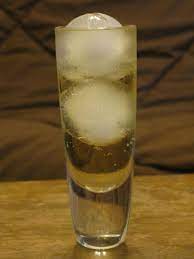Any excuse to drink some whisky, but, honestly, today is
International Whisky Day. In the spirit of March Madness, Dekanta listed 64 of the best Japanese Whiskies, with the winner to be crowned on April 1.
Vote here.
Here are a couple whiskies you can buy from Dekanta:
Or, if you want something more celebratory:
Then again, here is a perfectly drinkable cheapie:
Suntory Toki Japanese Whisky
$ 29.99
"Toki' means time in Japanese. And Suntory's Toki Whisky is a tribute to that. Its a blend of whiskies of varying ages from Suntory's three main distilleries - Hakushu, Yamazaki and Chita. The pairing of Hakushu
American white oak cask malt whisky with Chita heavy-type grain whisky, together with select Yamazaki malts to lend additional depth and complexity, gives Toki a silky taste and vivid character.
86 proof.
TASTING NOTES:
Color: clear gold
Nose: basil, green apple, honey
Palate: grapefruit, green grapes, peppermint, thyme.
Finish: subtly sweet and spicy finish with a hint of vanilla oak, white pepper and ginger
Except in Hawaii Marukai sells it for $35 or so the last time I checked. Toki means time in Japanese, and ignore the pepper and ginger stuff. It is easily drinkable and has no distinguishing taste. That $29.99 price is from
Mash & Grape.
Whiskey Advocate lists the best Japanese whiskies under $80:

They price Toki at $40. That is not the standard Hibiki you might have had two years ago. It's now named Japanese Harmony, and sells for $65.
The 2019 Edition of Hibiki 17 is available for pre-order on Japanese whisky retailer Dekanta for a whopping $600, a $450 jump over the whisky’s official $150 retail price. If you have been wondering why this beverage is sometimes spelled whisky and other times whiskey:
- Ireland and USA: whiskey
- Scotland, Canada and Japan: whisky
Whisk(e)y covers a lot of types of grain-alcohol:
- Scotch: barley
- Bourbon: corn or maize
- Rye: rye
For whisk(e)ys, there is straight, sometimes called malt in scotches, or blended, which combines brews from different distilleries. The plural? Whiskies and whiskeys.
Note that the Japanese cannot call their whisky Scotch, so they don't. But this product from the Orient is essentially the same, and began to get better from 2008 when a bottle of 20-year old Yoichi malt from Nikka was crowned the
best whisky in the world.
What happened was that:
- In 1918 Masataka Taketsuru, the heir to a noted sake brewing family, traveled from Japan to the University of Glasgow to study chemistry. He apprenticed at a liquor company there owned by Settsu Shuzo. Ah, but love can cause problems. Masataka promised to marry Shettsu's daughter for this opportunity, but fell in love with Rita, a Scottish girl. All three families were upset, but Masa and Rita went back to Japan where Masa impressed Shinjiro Torii of Torii Shoten to improve his mediocre whisky.
- In 1929 the two of them produced White Label at Shinjiro's Yamazaki distillery located just outside of Kyoto. But this product was too smoky for the Japanese, and after a decade dissolved their partnership.
- Masa and Rita moved to Hokkaido where Masa founded Nikka at Yoichi, and produced his first product in 1940. Close by this Yoichi complex is Otaru to the right.
- Sixty eight years later Yoichi from Nikka beat the Scots.
- Oh, don't feel sorry for Shinjiro Torii, for his company became Suntory.
- Below is that famous Japanese whisky photo from the movie Lost in Translation with Bill Murray. My favorite whisky scene from any film. Worth a look. Go, click on it. Suntory Hibiki.

According to some publications, while scotch in Scotland is drunk with a bit of water and at room temperature, and never with ice, Japanese bars chose to steer their product to one part whisky and three parts soda, to mimic beer. Ice came later, even in a spherical shape. Actually, my experience in Japan is that soda is rarely used, and something called mizuwari is the preferred request, which is two parts water and one part liquor (
originally shochu, but now mostly applies to whisky). The term oyuwari, which replaces cold water with hot water, is also used, but only for shochu.
One more educational item:
proof. This was a complicated matter in the past because of taxing. In the UK, citing proof allowed you to pay less, for a 100 proof spirit was defined to be 57 percent alcohol by volume (
ABV). Then in 1848 the U.S. just arbitrarily said proof was double the ABV. Thus if you have, say, 40% alcohol in the bottle, the proof was 80. Thankfully, the British around 1980 became americanized.
Here is the alcoholic content of common beverages:
As pictured, those volumes represent the equivalent amount of alcohol.
International Whisk(e)y Day honors
Michael Jackson. Not that American singer, but a British whisky writer who died of Parkinson's Disease. We thus celebrate this beverage on his birthday, today, and think about somehow also supporting research on this disease. That's him to the left.
Actually, you can imbibe on whisk(e)y two more times this year. On the third Saturday of May there is
World Whisky Day (
note no "e" because this day was invented in Scotland) and
National Bourbon Day on June 14. The latter is more a North American tradition, for Canadian whiskies are like bourbon because they use a combination of grains. There is no consensus, but the Scots brought their technology to Kentucky in the late 1700's and used corn mash to create
moonshine. The
water of life, scotch, was first brewed 500 years ago in Scotland.
-





















Comments
Post a Comment